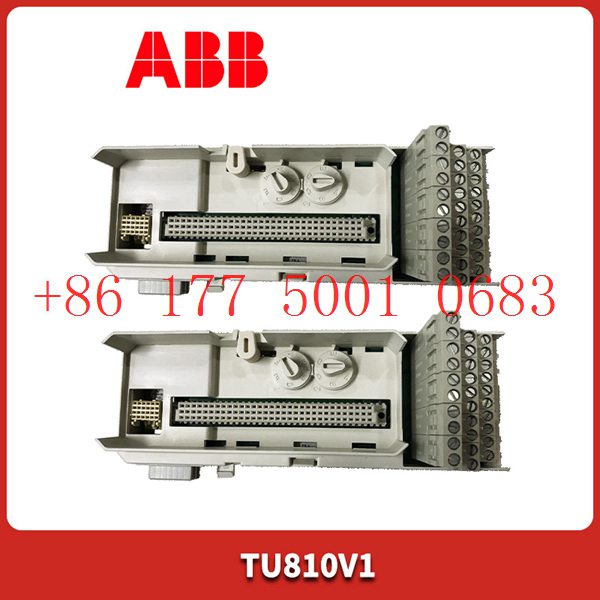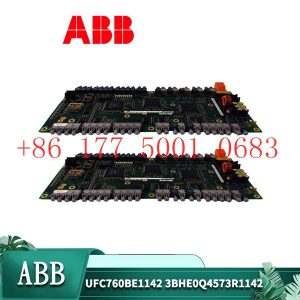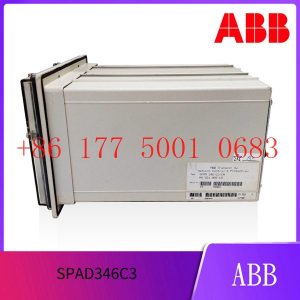Description
hardware flow control. It is an ideal choice in the field of industrial automation.
Although it was established only a few months ago, ABB Future Lab has already cooperated with Huawei to
complete the AI training of garbage sorting robots in two months. This robot uses AI technology based on Huawei
chips and uses industrial cameras to sort objects.
Obviously, adjusting the business model and organizational structure is an important reason why ABB has
lways been at the forefront of the industry.
From technology iteration to application implementation, ABB aims to provide complete solutions
As a pioneer in manufacturing automation and digitalization, ABB”s products in the automation field are constantly
improving, and its application industries are also expanding.
In Alf”s view, the structure and construction of automation have not changed much in the past 30 years. From signal
collection and information transmission to work scenarios or operational interfaces, the flow of information in automated systems has basically not changed.
But the arrival of 5G may change the way information is transmitted between devices. 5G’s characteristics such as large
capacity, high reliability and low latency make it possible to realize independent connections between devices. If real-time
mainline connection can be achieved and installed on the cloud or platform, it will be a more disruptive application.
5G will not only change the way ABB operates, but is also likely to introduce digitalization into the industry, including digital
operation and maintenance. ABB has launched an industrial Internet solution called ABB Ability, which firstly provides a platform
, and secondly, it includes all ABB”s digital cloud products, such as equipment industrial solutions and transportation solutions.
In addition to digitization, another focus of Alf is the autonomy of machines. He took the autonomous management of
autonomous driving and warehousing as examples to think about the development process of machine autonomy –
from human operation to machine operation, and ultimately to autonomous implementation and testing without the need for humans at all.
For ABB, in addition to popular autonomous driving technology, industrial production scenarios also have strong
demand for the autonomy of machinery and equipment, such as autonomous docking of ships and the mining industry
. In some industrial scenarios represented by mining, toxic gases and substances in the working environment are
harmful to the human body, so equipment
is required to have the ability to enter and leave the mine independently. ABB first needs to study the value proposition
of these businesses, discover potential applications, and then discover in which fields it can be applied.
A technology close to autonomy is artificial intelligence. Since its birth in the 1960s, it has been attracting people”s
attention, and there have been endless discussions about “robot replacement”. After decades of development,
related technologies have gradually matured, and more and more AI technologies have begun to be discussed
in the application field. The products and technologies
of leading manufacturers such as ABB have attracted much attention.
ABB has been applying AI technology to its products for 20 years, but its current mature products are mainly
diagnostic applications based on traditional statistics. Alf introduced to Yiou New Manufacturing that
as part of the diagnostic solution, this technology is mainly used to implement condition monitoring functions
. More mature applications are reflected in the automated management of equipment, such as the electronic
management of ships.
Machine learning is another promising AI technology. At the World Artificial Intelligence Conference at the
end of August this year, ABB demonstrated a coffee workbench composed of a two-arm collaborative robot Yu Mi.
Through guided programming of YuMi, the collaborative robot can learn and
remember the barista”s movements to complete the complete process of making coffee, latte art and delivering it to the audience.
In actual implementation scenarios, this technology is used to transform terminals carrying containers. By simulating the
location and status of box handling, the collected data is used to train the AI, allowing the AI to know the
location of the container, thereby achieving automation.
From automation, digitalization, autonomy and artificial intelligence technologies, ABB is not a blind pursuer of
emerging technology concepts. It pays more attention to customer needs and actual implementation, and achieves
better solutions through different product combinations.
There are two major difficulties in balancing R&D and business and implementing solutions.
As a commercial company, ABB still needs to consider the balance between R&D investment and revenue.
In Alf”s view, they do not have unlimited R&D resources, so they need to focus on finding a balance between
improving original product functions and developing new functions. In terms of technology research and development,
we also need to try to focus on projects that can bring the greatest value to the company.
Regarding the specific implementation of digital solutions, Alf believes that there are currently two main difficulties.
The first difficulty is that ABB cannot just develop a general solution, because different industry segments
have different needs, so it must design solutions that suit their different needs. ABB not only needs to master
knowledge in different fields and different applications, but also needs to consider the availability of data.
The second difficulty lies in the use of data, because AI requires a large amount of data training. On
the one hand, ABB needs to encourage customers to provide data for training models; on the other hand,
ABB also needs to ensure customers the privacy, ownership and security of their data.
“Industrial artificial intelligence needs to be combined with models and data. But the most
important thing is that we must provide value to customers through the use of AI, otherwise we will just
apply technology for the sake of applying technology.” Alf concluded.
https://www.xmamazon.com
https://www.xmamazon.com
https://www.plcdcs.com/
www.module-plc.com/
https://www.ymgk.com
05701-A-0361 Backplane Serial communication controller and monitor
810-800081-022 LAM Circuit board module
05074-A-0122 05704-A-0121 05704-A-0131 Relay interface card
810-066590-004 LAM Circuit board module
T8403C Trusted TMR 24Vdc digital input module
05701-A-0325 DC input card
T9110 AADvance controller
T9451 AADvance controller Controller module
T9402 AADvance controller
T8311 Trusted TMR expander Interface
T8151B Trusted ® Communication Interface Adapter
T8310 Trusted TMR expander Interface
05704-A-0145 Four-channel controller card 4-20 MA input
GE IS215VCMIH2BB IS200VCMIH2BCC Mark VI System board components
E1740A Agilent Time interval analyzer
GE IS215VCMIH2CA IS200VCMIH2CAA VME communication card
E1406A Agilent Time interval analyzer
05704-A-0144 Four channel control card catalytic input
FBM233 P0926GX FBM233 Field device system integration module
IS420UCSBH1A Mark VIe series UCSB controller
DDC779BE02 3BHE006805R0002 Control panel and control system
MMS6120 Dual channel bearing vibration measurement module MMS 6120
24765-02-01 Housing expansion sensor assembly
CI526 3BSE006085R1 Interface Module
3BSE005831R1 PM632 Processor Unit
3BSE004773R1 CS513K02 MasterBus 300E communication interface
PU512V1 3BSE004736R1 Real Time Accelerator (RTA) Module
3BSE004726R1 DSTD197 Connection Unit 8 ch, 120V
3BSE004723R1 DSTD190 Connection Unit 32 Ch
3BSE004382R1 DSRF185 ABB
DSDX180 3BSE003859R1 Digital In / Out Module
3BSE003832R1 SC510 Submodule Carrier without CPU
3BSE003829R1 CI532V04 AC410 » Communication Modules
3BSE003827R1 CI532V02 MODBUS Interface, 2 ch
SA167 3BSE003390R1 Power Supply Unit AC 115V / DC
SA168 3BSE003389R1 Power Supply Unit
07KR51-230VAC 1SBP260511R1001 Controller Basic Unit
07KP93 GJR5253200R1161 Communication Processor
ABB 07KP90 GJR5251000R0303 Communications Module
07KP53 1SBP260162R1001 MODBUS Coupler (07KP53)
07DC92 GJR5252200R0101 Configurable Digital I/O Module
07DC91 GJR5251400R0202 Digital I/O module
07CR41-c12 1SBP260020R1001 Advant Controller Basic Unit
07CR41 1SBP260020R1001 07CR41 Advant Controller Basic Unit – 24VDC
07AI91 GJR5251600R0202 Analog I/O, module
07AC91 GJR5252300R0101 ABB Advant OCS Analog I/O Unit
HIEE320693R0001 NU8976A Power module
HIER466665R0099 NU8976A99 Excitation module









Reviews
There are no reviews yet.